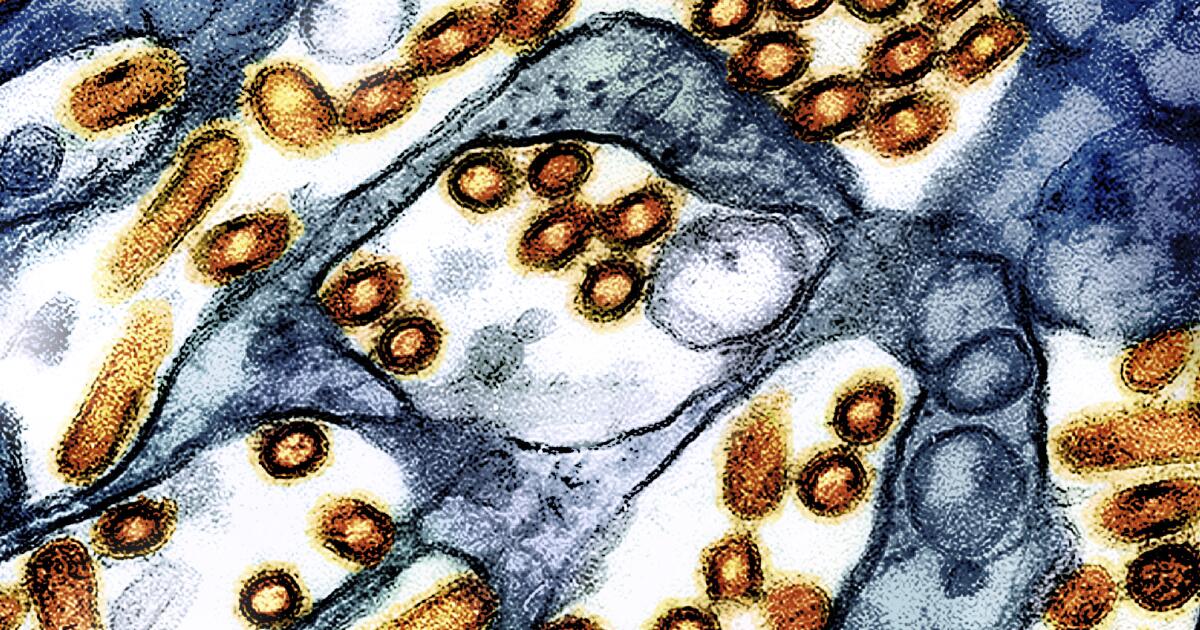Culture
Why are so many NFL safeties being cut? Will their market vanish like it did for RBs?

The Denver Broncos’ decision to release star safety Justin Simmons could easily be written off as collateral damage and a regrettable but necessary step toward recalibrating their salary cap.
But digging deeper, a trend seems to be forming at Simmons’ position, as a group of safeties have flooded the free-agent market with teams seemingly prioritizing other areas of the roster. Kevin Byard, Jordan Poyer, Jamal Adams, Eddie Jackson, Quandre Diggs, Rayshawn Jenkins and Marcus Maye were all cut (or designated a post-June 1 cut in Maye’s case) while Antoine Winfield Jr. was franchise tagged by the Tampa Bay Buccaneers, Kyle Dugger was transition tagged by the New England Patriots and Xavier McKinney wasn’t tagged in any capacity by the New York Giants.
GO DEEPER
NFL franchise tag winners and losers: Baker Mayfield, good news for RBs and more
There was a brief moment Tuesday when McKinney seemed to be in a prime position to monopolize the top tier of the safety market in free agency. But within 48 hours, he was shoulder to shoulder with more peers than he likely expected.
The supply is in line to outweigh the demand, which could drive down the value of the position. It’s unlikely to be as dramatic as the running backs’ sinking market, but seven personnel executives and coaches around the NFL told The Athletic something has been developing, even if it only becomes a short-term trend.
“(It’s part of a) larger financial trend,” an executive said. “The market got too high for the position’s impact overall.”
To be fair, it’s impossible to separate Simmons’ release from quarterback Russell Wilson, whose release will result in $85 million in dead cap space against the Broncos. Simmons, 30, may not be at the top of his game any longer, but rival teams still viewed him as one of the game’s best safeties, and his leadership is beyond reproach. But the $14.5 million in cap savings is significant for a team in severe financial disarray in the wake of Wilson’s release. The Broncos will have a series of difficult contractual decisions to make until Wilson’s money comes off the cap.
“(Simmons) is too expensive considering everything else they need to do,” a coach said. “Russell Wilson is an expensive divorce.”
GO DEEPER
Justin Simmons’ Broncos legacy: Picks, community impact and always facing music
In that respect, Simmons’ release is unique.
But that’s not the whole story. For all of Simmons’ positive attributes, a few of the executives recognized why he wasn’t necessarily worth the cap hit, and the argument was geared more toward the position as a whole.
As the league has become more pass-happy, teams are far more inclined to overspend at quarterback, wide receiver, offensive tackle, edge rusher, cornerback and defensive tackle.
They’ve had to cut back on other positions as a result, whether it’s running back, inside linebacker or safety. Of course, there are always exceptions, but that’s become the general model. As of Thursday morning, more than $100 million in 2024 cash salary had been shed at the safety position, according to Over The Cap’s Nick Korte. That was the most of any position by nearly $40 million.
This shit crazy! No loyalty for anything or anybody in this league!
Dude has been All Pro and Pro Bowler consistently and a staple of Denver!!What’s really going on with this exodus on safeties?? https://t.co/JeqMkGiEgG— Nino (@qdiggs6) March 7, 2024
As one executive pointed out, there was a thin group of safeties in free agency in 2023, and Jessie Bates (four years, $64 million with Atlanta) was the only player who earned a massive contract. Carolina’s Vonn Bell, Cleveland’s Juan Thornhill and Dallas’ Donovan Wilson were the only others who signed deals worth at least $20 million in total money. Those four were among nine safeties who signed for at least $6 million annually.
“While the market wasn’t nearly as strong (in 2023), you saw teams weren’t willing to pay,” an executive said. “I think we’re going to see a trend of teams not willing to overpay for this position.”
Philosophically, what’s happening may be more similar to what’s happened to linebackers than to running backs. Within a certain extent, smart defensive coordinators have schemed up ways to make safeties and linebackers interchangeable commodities in specific packages. And some of the better slot cornerbacks have taken on safety responsibilities, either in a game-plan role or on a full-time basis.
Meanwhile, running backs have become easier to find in the draft, and younger players with less mileage become valuable commodities at a position where injuries take their toll, especially when there’s typically just one on the field at a time.
This actually yielded a counterpoint. It’s relatively rare for a rookie safety to make an impact, so the veteran market should be more appealing in that sense. It may not feel tangible, but it’s usually not hard to figure out which cornerbacks are impacted by the safety play around them, for better or worse.
“You’re often looking for defensive coordinators who can convert (players) to safety because there aren’t enough,” an executive said. “Which you would think would make the NFL (veteran) have more value, but that’s not what’s happening.”
Some of what’s happened this week may be largely a coincidence — or at least not indicative of a larger trend about the position. Of the eight aforementioned safeties who were recently released, seven are on the wrong side of 30. Adams, the exception, has an extensive injury history and has played only 10 games over the last two seasons.
Meanwhile, of the 10 safeties on multiyear deals worth at least $10 million annually, Minnesota’s Harrison Smith is the only player older than 30. Like any other position, teams are more willing to dish out market-setting contracts for their younger players. Winfield and Dugger are near certainties to further skew those numbers in the youth’s favor when they turn their tags into extensions. McKinney is a candidate to join the $10 million club as well.
So while there definitely seems to be a trend developing, there are various reasons to explain why so many safeties have flooded the market lately. Teams are prioritizing more impactful positions, but age and cap casualties don’t discriminate anywhere on the depth chart.
“Because so many (safeties) will be released, teams don’t feel the need to overpay,” a coach said. “But I don’t see any safety trend long term to pay less like what’s happened to the running back market.”
(Photo of Justin Simmons: Grant Halverson / Getty Images)

Culture
Which Notable Book of 2025 Should You Read? Let Us Help You.

We’ve released our list of 100 Notable Books. (You can read it in full here!) Browsing a list of 100 books is exciting, but can be overwhelming. Want to find one to read right away? We can help! Here is a cheat sheet to the list, broken into categories. Clicking a book cover will take you to the full review.
Let’s ease into things. How about a book I can read in a day?
Give me a novel that takes me back in time
Actually, give me a nonfiction book that takes me back in time
I need a crowd-pleaser for my book club — the longer, the better
I’m in the mood to laugh!
I’d like a rich, immersive thriller
I want insight into current events
Are there books that will make me swoon?
How about some fantasy?
I’d like an absorbing memoir or biography
I love family sagas — real or imagined
I like to be scared
I’m hungry!
I want to read about the creative process
Take me somewhere far, far away
I could use a good, cathartic cry
Culture
Can You Identify Lines From These Classic Science Fiction Novels?

Welcome to Literary Quotable Quotes, a quiz that tests your recognition of memorable lines. This week’s installment highlights lines from notable 20th-century science fiction novels. In the five multiple-choice questions below, tap or click on the answer you think is correct. After the last question, you’ll find links to the books if you want to experience the entire work in context.
Culture
Do You Recognize These Past Winners of the National Book Award?

Welcome to Lit Trivia, the Book Review’s regular quiz about books, authors and literary culture. In honor of the National Book Awards presented by the National Book Association on Nov. 19, this week’s challenge celebrates winners from the past 20 years and asks you to identify a title by a short description of the work. In the five multiple-choice questions below, tap or click on the answer you think is correct. After the last question, you’ll find links to the books if you’d like to do further reading.
-
Business1 week ago
Fire survivors can use this new portal to rebuild faster and save money
-

 World1 week ago
World1 week agoFrance and Germany support simplification push for digital rules
-

 News1 week ago
News1 week agoCourt documents shed light on Indiana shooting that sparked stand-your-ground debate
-

 World1 week ago
World1 week agoSinclair Snaps Up 8% Stake in Scripps in Advance of Potential Merger
-

 Science4 days ago
Science4 days agoWashington state resident dies of new H5N5 form of bird flu
-

 World1 week ago
World1 week agoCalls for answers grow over Canada’s interrogation of Israel critic
-

 Politics1 week ago
Politics1 week agoDuckworth fires staffer who claimed to be attorney for detained illegal immigrant with criminal history
-

 Technology1 week ago
Technology1 week agoFake flight cancellation texts target travelers
























